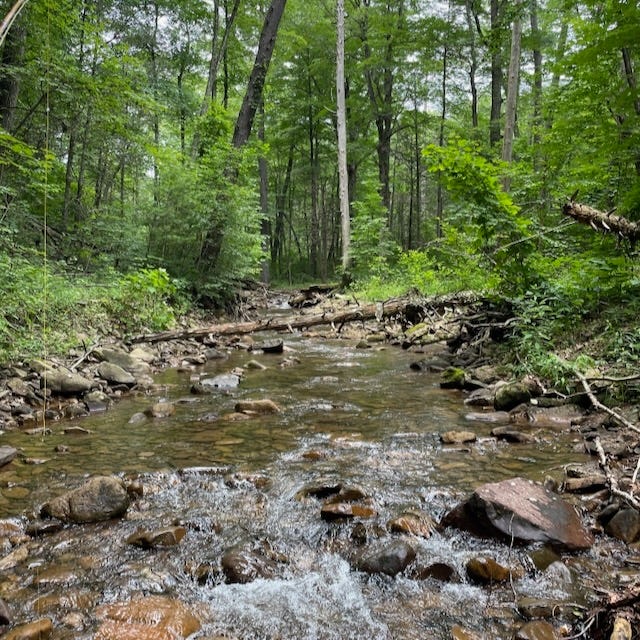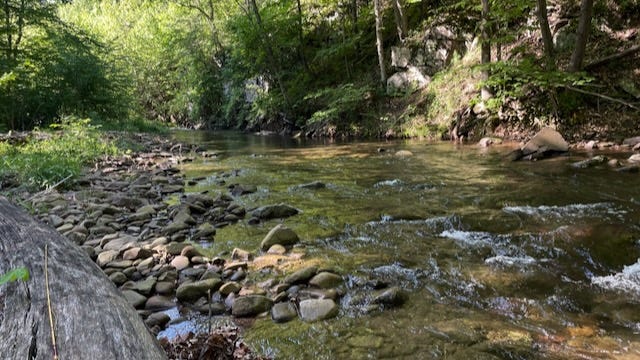When thinking about places I’ve fished over the years, I keep coming back to recollections of small streams. There is something about the harmony of similarities and uniqueness that makes them memorable and always enjoyable.
Gear
If you’ve read Short casts, you know I like slow/soft action rods like bamboo or fiberglass for fishing small streams. You need a rod that loads easily (the article explains more) for making short casts typical on small streams.
Sidebar: Rio Creek Fly Line
After I wrote Short casts, my friend Rob Parkins pointed out that Rio makes a specialty line, the Creek.
As you can see from the diagram above, it’s a weight forward line with a short front taper. This will help faster action rods load without a lot of line out of the rod tip. This line on a Scott G series comes to mind.
If you don’t have a soft action rod, and are not ready to invest in one, then give this line a try.
Leader and Tippet
I use a short, 7.5’ 3x or 4x leader and add or remove tippet as needed. I size down one x for droppers. A trick I use is to take a 7.5’ 3x or 4x leader and cut off 12-18’’ from the end. Now I have a 6’ to 6.5’ leader at in one x size larger and a section for a dropper. Since I fish dry-dropper rigs most of the time, it’s a very handy set up.
The Fun Part
Small streams offer a variety of fishing scenarios, and that’s what I like most about them. You have pools, runs, riffles and pocket water all in one area. That variety gives you a chance to try various techniques, maybe even go for a technique slam. It also is where I find many of my more contemplative moments.
Pocket Water
My favorite spots on small streams are those small pockets in a stretch of water between pools and riffles. As my good friend Brian Trow says, “if you can get two feet, one in front of the other in the water and the water goes over the top of your boot, put a fly in it.”
Time and again, friends and clients are thrilled to find a good size trout take a fly in those little buckets. Think of each bucket as a tiny pool, with a head, middle and tail out, only in miniature. Make a couple of casts above just above the head, then one or two to the middle and one to the tail. If nothing happens, move on. There are plenty more to come.
Riffles
“Seams,” and “foam is home” are more than trite phrases, especially in small streams. The choppy water in a riffle can intimidate inexperience anglers. The trick is to work the areas where slow water meets fast, often caused by changes in speed or depth. Those are called seams and very distinct once you know what they look like.
Make a cast as close to the start or even above the seam so the fly travels down the seam. Make two or three casts to the near side seam, then two or three casts down the middle in the choppy water, then a few more on the far seam. Having a rod long enough to reach there and mend line can be a real help here.
Pools and Runs
Below riffles you will find pools or runs of varying lengths and depths. Both require a stealthy approach. Take a few minutes to look them over and make a plan.
Look over the subsurface topography, especially the drop offs and depth changes and channels
Look for structure like logs or under cuts.
Read the currents on the surface.
With long runs of slower moving water, it's easy to spook fish. Wade slowly and pick your targets carefully. Most of the time, unless there are fish rising consistently, I pass them by for more interesting water like. That said, pools and runs can be a great place to fish a streamer.
If you have questions about fishing small streams, don’t hesitate to leave a comment. I’ll do my best to answer.








